
Food Health Risks
This Topic Covers:
What are the health risks in our food? Learn what to eat
(and what not to eat) to avoid an over burden of toxins,
chemicals, hormones and pesticides.
Introduction
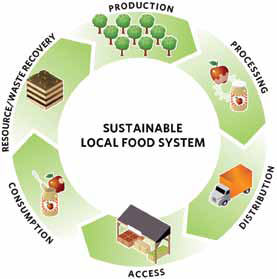
www.foodandwaterwatch.org © Food & Water Watch
Everyone wants the food they feed themselves and
their families to be safe. But it seems like almost every day we hear about
another food scare: meat contaminated with e. coli, peanut butter and
chicken carrying salmonella, listeria in cantaloupe and other food-borne
illnesses.
While these immediate threats to the safety of our food
get the most headlines, long-term, systemic food safety problems are just as
serious and are often tied to the same industrialized practices. Exposure to
chemical residues in food, antibiotic resistance, artificial growth hormones
and questionable technologies, like genetic engineering and irradiation that
have not been studied for long-term impacts, could have serious consequences
to our health and environment.
There are a lot of factors that impact food safety,
including:
-
Federal
rules and standards, and whether or not government regulators (such
as the FDA and USDA) have the resources and political will to enforce
them.
-
Transparency and Consumer Information.
-
Where our
food comes from. Foods imported from countries with lax safety
standards bring their own safety concerns.
-
How our food
is grown and raised. Factory farmed meat, poultry, dairy and eggs
raise troubling health concerns, and genetically engineered (GE) food
has yet to be studied for long-term impacts. In addition, factory farms
and GE foods on the shelves now can affect our health in the future,
through antibiotic resistance, artificial growth hormones, and chemical
residues.
www.themeatrix.com © 2014 GRACE
Communications Foundation
Learning about sustainable
food and the problems with factory farming can be daunting, but with
a little effort you can quickly learn enough to
make the safest and wisest food choices for you and your family.
Here, we introduce you to the
major issues surrounding sustainable
agriculture and factory farming. Below we’ve provided simple overviews of
the issues – click on the headers to read the full report!
Additives - Much of the food we find at today’s supermarkets is highly
processed and contains numerous food additives. These substances are used to
change the way food tastes and looks (altering the color and texture), to
improve the nutritional quality of foods (adding vitamins and minerals), and
to increase the food’s shelf life to prevent spoilage.
Eat Local, Buy Local, Be Local - Most meals travel hundreds or even
thousands of miles to reach your dinner plate. By eating food produced
locally, you are helping yourself, the environment and your community.
Environment - Agriculture has an enormous impact on the environment, but
whether the impact is good or bad depends on the type of agriculture used.
Sustainable agriculture puts back what it takes from the environment, while
factory farming pollutes our air, water and soil.
Factory Farming - Meat and dairy production in the United States has
changed dramatically over the past 30 years. Small family farms have been
replaced by huge livestock facilities, where animals suffer horribly,
workers are mistreated, the environment is being destroyed, and where rural
communities are falling apart.
Family Farms - are being forced out of business at an alarming rate, and
hundreds of small farmers sell their land every week. The dramatic expansion
of industrial agriculture has made it increasingly difficult for small
family farmers in the US, but many small family farms have found hope within
the sustainable food movement.
Feed
- Animals on industrial farms are fed the cheapest grains and waste products
in order to fatten them quickly. This leads to widespread health problems,
so low doses of antibiotics are also added to the feed. The result is
unhealthy animals and unhealthy food for consumers.
Food Irradiation - is used to increase the shelf life of the food so it
can travel longer distances and keep for as long as possible. This
processing method has not been properly tested for safety and it depletes
the vitamin content of food.
Food Safety - The significant corporate consolidation of global food
production has created a food system that values
quantity over quality. Every single decision a farmer, or
corporation, makes about growing or raising a certain kind of food affects
the final product. Cutting corners on the quality of animal feed, waste
management, level of training for farm workers, processing methods and
distribution all contribute to the safety of our food.
To read in entirety...www.themeatrix.com
top
Alarming Statistics
Arsenic is added to poultry feed for the purposes of inducing faster weight
gain on less feed, and creating the perceived appearance of a healthy color
in meat from chickens, turkeys and hogs. A 2006 IATP report estimated that
more than 70
percent of all U.S. chickens raised for meat are fed arsenic,
and testing of supermarket bought and fast food chicken found that much of
it contained some level of arsenic.
www.ewg.org
© Environmental Working Group
Fully 87 percent of store-bought meat collected by
federal scientist in the most recent round of test was contaminated with
both normal and antibiotic-resistant Enterococcus bacteria, evidence that
most of this meat likely came in contact with fecal matter at some point.
To be safe, consumers should treat all meat as if
it may be contaminated, mainly by cooking thoroughly and using safe shopping
and kitchen practices (see EWG’s downloadable Tips to Avoiding
Superbugs in Meat)
An analysis by the Environmental Working Group has determined that
government tests of raw supermarket meat published
February 5, 2013 detected
antibiotic-resistant bacteria in:
www.centerforfoodsafety
© CENTER FOR FOOD SAFETY
A number of studies over the past decade
have revealed that genetically engineered foods can pose serious risks to
humans, domesticated animals, wildlife and the environment. Human health
effects can include higher risks of toxicity, allergenicity, antibiotic
resistance, immune-suppression and cancer.
Currently, up to 40 percent of
U.S. corn is genetically engineered, as are 80 percent of soybeans.
It has been
estimated that upwards of 60 percent of
processed foods on supermarket shelves--from soda to soup, crackers to
condiments--contain genetically engineered ingredients... www.centerforfoodsafety
offgridsurvival.com
Reports,
...only 1%
– 2% of all the food imported from China is ever inspected by the FDA.
This is a huge problem; especially when you consider the fact that most of
these Chinese imports are filled with disturbingly high levels of chemicals,
pesticides, toxic substances and heavy metals…
www.dailymail.co.uk
Reports,
Now experts are
warning that the overuse of antibiotics in poultry farms around the world is
creating a generation of superbugs that are
resistant to treatment by virtually every drug in the medical
establishment’s armoury.
With up to 80 per cent of the raw chicken on sale in some countries carrying
these resistant bacteria, they can be transferred to humans during the
handling of infected meat or the eating of undercooked produce.
www.ama-assn.org - Copyright 1995-2014 American Medical Association
Foodborne illnesses are extremely common diseases. An
estimated 325,000 serious illnesses resulting in hospitalizations, 76
million cases of gastrointestinal illness, and 5,000 deaths each year have
been attributed to food-associated dangers. Substantial progress made in the
past in preventing certain foodborne illnesses such as typhoid and cholera
has led to decreased national attention on foodborne illness. This, coupled
with recent changes in human demographics and eating behavior, technology
and industry, international travel and commerce, microbial adaptation,
economic development and land use, and the lack of funding for updating
public health measures, has resulted in new and reemerging foodborne
illnesses.
www.thelibertybeacon.com - 2013/02/18
epa-approved-gmo-insecticide-responsible-for-killing-off-bees-puts-entire-food-chain-at-risk
New information has come out that links
an insecticide approved by the EPA (Environmental Protection Agency) to
killing off millions of Bees and puts food chain at risk.
www.washingtonpost.com - 2013/05/03 -
why-are-bees-dying-the-u-s-and-europe-have-different-theories
The mysterious collapse of bee colonies around the world has turned into a
real crisis. In the United States, domesticated bee populations have reached
a 50-year low and keep dwindling. The situation is just as dire in many
other countries.
And that’s bad news for all those crops that depend on bees. The U.N. Food
and Agriculture Organization estimates that
“out of some 100 crop species which provide 90% of food worldwide, 71 of
these are bee-pollinated.”
...The link between pesticides and bee die-offs is still subject to
some dispute. So, in the face of uncertainty, the European Commission is
erring on the side of the environment — voting to ban neonicotinoids for two
years just in case they really are to
blame for the bee collapse...The United States, meanwhile, is
erring on the side of certain economic interests — it’s still not clear that
neonicotinoids are to blame, and pesticides are a billion-dollar industry,
so regulators are moving slowly in setting restrictions.
top
Superbugs in
Our Food
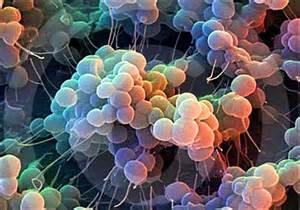
www.ewg.org -
© Environmental Working Group
Not surprisingly, superbugs spawned by antibiotic misuse -- and now
pervasive in the meat Americans buy -- have become a direct source of
foodborne illness.
Even more ominously, antibiotic misuse threatens to make important
antibiotics ineffective in treating human disease. In the past, people who
became ill because of contact with harmful microbes on raw meat usually
recovered quickly when treated with antibiotics. But today, the chances are increasing that
a person can suffer serious illness, complications or death because of a
bacterial infection that doctors must struggle to control.
The proliferation of antibiotic-resistant bacteria poses special dangers to
young children, pregnant women, the elderly and people with weakened immune
systems.
Among the most worrisome recent developments:
The federal tests published
in February determined that 9
percent of raw chicken samples and 10 percent of raw ground turkey sampled
from retail supermarkets in 2011 were tainted with a superbug version of
salmonella bacteria. Antibiotic resistance in salmonella is growing fast: of
all salmonella microbes found on raw chicken sampled in 2011, 74
percent were antibiotic-resistant, compared to less than 50 percent in 2002.
These microbes, frequently found on chicken and turkey and occasionally on
beef and pork, commonly cause diarrhea and in extreme cases can lead to
arthritis.
In the same federal tests, a superbug version of
the Campylobacter jejuni microbe was detected on 26 percent of raw chicken
pieces. Raw turkey samples contained numerically fewer of these microbes,
but 100 percent of those examined were antibiotic-resistant.
The Campylobacter jejuni pathogen is a common cause of diarrhea and in
severe cases can trigger an autoimmune disease that results in paralysis and
requires intensive care treatment.
In 2006 FDA scientists found superbug
versions of a particularly troublesome strain of E. coli, responsible for
more than 6 million infections a year in the U.S., on 16 percent of ground
turkey and 13 percent of chicken. Fully 84 percent of the E. coli bacteria
identified in these tests were resistant to antibiotics.
In its own tests of raw pork,
published last January, Consumer
Reports magazine found that 63 percent contained a superbug version
of Yersinia enterocolitica, a microbe that can cause long-lasting bouts of
diarrhea.
In 2011 tests, researchers at Northern Arizona
University and the Translational Genomics Research Institute found that 74
percent of store-bought raw turkey samples were tainted with Staphylococcus
aureus bacteria resistant to at least one antibiotic. Of these staph
bacteria, 79 percent were resistant to three or more types of antibiotics.
Staph can cause skin infections in exposed cuts or produce
toxins that cause foodborne illness.
A significant contributor to
the looming superbug crisis, according
to scientists and health experts, is unnecessary antibiotic usage by
factory farms that produce most of
the 8.9
billion animals
raised for food in the U.S. every year.
Industrial livestock producers routinely dose their animals with
pharmaceuticals, mostly administered with limited veterinary oversight and
frequently without prescriptions, to encourage faster growth or prevent
infection in crowded, stressful and often unsanitary living conditions.
Overuse of
antibiotics in people, often for colds and other viral illnesses, has
contributed to antibiotic resistance, too, but responsible doctors generally
take care not to prescribe them unnecessarily.
Pharmaceutical makers have powerful financial incentives to encourage abuse
of antibiotics in livestock operations.
In 2011, they sold nearly 30
million pounds of antibiotics for use
on domestic food-producing animals, up 22
percent over 2005
sales by weight, according to reports complied by the FDA and the Animal
Health Institute, an industry group. Today, pharmaceuticals sold for use on
food-producing animals amount to nearly 80
percent of
the American antibiotics market, according to the Pew Campaign on Human
Health and Industrial Farming. Pew calculates that the market for
antibiotics for treatment of people has been flat for some years, hovering
at around 7.7 million pounds annually.
top
How to Protect
Yourself from Food Superbugs

static.ewg.org
© Environmental Working Group
EWG recommends that consumers assume that all meat is contaminated with
disease-causing bacteria. They can avoid superbugs in meat by eating less
factory-farmed meat, by buying meat raised without antibiotics and by
following other simple tips in EWG's
downloadable
Tips to Avoiding
Superbugs
in Meat.
When shopping, look for:
-
Grass-fed or pasture-raised meat. It
has fewer antibiotics and hormones and in some cases may have more
nutrients and less fat; livestock live in more humane, open, sanitary
conditions.
-
Lean cuts: less
fat will likely mean fewer cancer-causing toxins in your body.
-
No antibiotics or hormones: reduces
unnecessary exposure and helps keep human medicines effective.
-
Certified organic: keeps
pesticides, chemical fertilizers and genetically modified foods off
land, out of water and out of our bodies.
-
Humane Certifications: Animal
Welfare Approved, Certified Humane, Global Animal Partnership and Food
Alliance Certified ensure that animals were raised humanely with enough
space for natural behaviors and without growth hormones or antibiotics.
-
Unprocessed, nitrite-free and low-sodium: avoid
lunchmeats, hot dogs, prepackaged smoked meats and chicken nuggets.
-
Seafood: avoid
air freighted fish and most
farmed salmon.
Consult
Monterey
Bay Aquarium’s list
of the most sustainable seafood choices.
At the Store - Bag
raw meat before it goes in the grocery cart—keep away from children. Be
especially careful with ground meats. They harbor more bacteria because they
have more surfaces where bacteria can lurk.
In the Kitchen -
store meat on the lowest rack in the fridge, away from fresh produce. Thaw
in fridge. Use separate cutting boards for meat and produce. Don’t wash meat
– splashes spread bacteria. Use a food thermometer.
Be label-savvy.
Labels can be misleading:
Most Reliable – USDA
Certified Organic, Animal Welfare Approved, Certified Humane, Global Animal
Partnership.
Less Reliable -
American humane Certified, Raised without antibiotics, No antibiotics, No
antibiotics ever, No antibiotics added, No antibiotics administered
Be Wary
- No antibiotic Residues, antibiotic Free, No antibiotic Growth promotants.
No hormones or steroids added, Natural or Kosher - don’t tell you anything
about antibiotic use.
top
Understanding & Decoding
Meat Labels
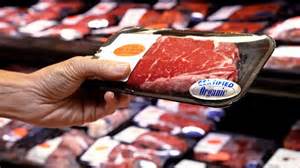
www.ewg.org
© Environmental Working Group
Natural
- The USDA defines a
natural product as one that contains “no artificial ingredient or added
color and is only minimally processed.” Processing must not fundamentally
alter the product. The label must include a specific explanation such as “no
artificial ingredients; minimally processed.” All fresh meat qualifies as
natural. This term does not require
that animals be raised in sufficient open space or indicate that antibiotics
have been used prudently.
It does not bar growth hormones. It does not mean organic. The term can
mislead consumers to believe that the product is healthier and more humane
than it is.
Free-range
- In the United States, this term applies only to poultry and is regulated
by the US Department of Agriculture. It indicates simply that the animals
have been “allowed access to the outside.” The USDA does not specify the
quality or size of the outside range nor the duration of time an animal must
have access to the outside.
Grass-fed
- This term technically refers only to animals fed a diet of natural grass
and other forage, not grain, but it often includes other healthier farm
practices not associated with industrially produced meat, such as local
butchering, more range time for livestock and less crowded conditions. The
three leading “grass-fed” labels, certified by the Food Alliance, the
American Grassfed Association or the USDA, require that animals eat a diet
exclusively of forage. Some companies that market their meat as “naturally
raised” or grass-fed actually feed their animals grain for significant
periods. USDA’s grass-fed marketing standard requires only that animals
“must have continuous access to pasture during the growing season.” It does
not necessarily mean that the animals spent their entire lives in pastures
or on rangeland. Some cattle marketed as USDA grass-fed actually spend part
of their lives in confined pens or feedlots.
Certified Humane
- This label was set up by Humane
Farm Animal Care,
a non-profit, with endorsements from the American
Society for the Prevention of Cruelty to Animals,
the Humane
Society of the United States and
other humane organizations. It certifies that animals were never confined in
cages or crates, that poultry were not subjected to de-beaking and that
animals were slaughtered according to specific requirements designed to
minimize suffering. This certification is not granted to producers who use
growth hormones. Antibiotics can be used only to treat sick animals as
directed by a veterinarian. The label does not require that the animals have
access to pasture or range. Unlike "Animal Welfare Approved," “Certified
Humane” is available to corporate farms.
Organic
- Food labeled organic must be third-party certified to meet USDA’s
criteria. Organic foods cannot be irradiated, genetically modified or grown
using synthetic fertilizers, chemicals or sewage sludge. Organic meat and
poultry cannot be treated with hormones or antibiotics (sick animals must be
treated but cannot be sold as organic) and must be fed only organically
grown feed (with no animal byproducts). Organic meat animals must have
access to the outdoors, and ruminants must have access to pasture. There are
two ways to identify organic fruits and vegetables: by the “100% organic” or
“organic” label and by the unique
Price Look-Up (PLU) code sticker.
Instead of a 4-digit number beginning with a “4,” organic produce has a
5-digit number that begins with a “9.”
rBGH-free - These products are from
animals not treated with recombinant bovine growth hormone (rBGH), also
known as recombinant bovine somatotropin (rBST). rGBH is a genetically
engineered hormone approved by the FDA in 1993 that when injected into cows
artificially increases milk production by 10 to 15 percent. There are health
concerns for both cows and humans exposed to the drug. Buying organic dairy
products is another way to avoid rGBH since its use does not meet the
organic criteria.
Nitrates/Nitrites
- Processed meats such as ham, bacon, lunch meats and hot dogs often contain
nitrates or nitrites–often in the form of sodium nitrate–added to prevent
the growth of harmful bacteria, to enhance color or add a smoky flavor.
Eating meat treated with nitrates may increase the risk of cancer and other
health problems through the formation of nitrosamines.
Hormone-free/No added hormones
- This means that the animals were never given hormone treatments. To boost
profits, some farmers give hormones to beef cattle and sheep to speed their
growth and to dairy cows to increase milk production. The U.S. Department of
Agriculture does not allow hormones to be used in chickens, turkeys or hogs.
The European Union does not allow hormones in any meat. The extensive use of
hormones (see rBHG–free below) in meat and dairy may increase the risk of
cancer in humans and result in higher rates of infection in animals.
Products labeled “organic” cannot come from rGBH–treated cows. There is no
specific hormone–free certification, though organic and grass–fed labels as
well as many humane certifications do not allow hormone use. The label does
not indicate whether antibiotics were used appropriately in animals.
Kosher
- refers to foods acceptable for those of the Jewish faith who observe
dietary laws prescribed in the Torah. For meat, a kosher label indicates
that a trained professional called a “shochet” slaughtered the animal in a
specific manner.
Kosher
guidelines do not restrict growth hormones, pesticides in feed or
antibiotics.
Farmed Fish
- This refers to the rapidly growing industry that raises and feeds fish for
human consumption in tanks or large wire pens anchored in coastal areas or
other large bodies of water. Also called aquaculture, fish farming is
expanding to offset the global decline in the wild fish catch. Fifty percent
of seafood sold in the U.S. is now farmed. Ironically, feeding carnivorous
farmed fish such as salmon requires harvesting millions of tons of smaller
wild fish, such as anchovies and sardines, to produce fishmeal and fish oil.
Catfish and other farmed fish are fed mostly soybeans and corn, while farmed
tilapia eats a variety of algae, seaweeds and other aquatic plants. The use
of open ponds and net pens or cages allows ocean water to flow freely
through them. These enclosures pollute local waters with fish waste, excess
feed and antibiotics and spread disease and parasites to sensitive wild
marine species. The rapid growth of farmed shrimp ponds has led to
deliberate destruction of thousands of coastal acres of mangrove forests
that serve as fish nurseries, protect against storms and provide local
economic livelihood.
Wild-caught/Wild Fish
- The “wild fish” label indicates that the fish was spawned in the wild,
lived in the wild and was caught in the wild. “Wild-caught fish” may have
been spawned or lived some part of their lives in a fish farm before being
returned to the wild and eventually caught. For sustainable fish, consult
the
Monterey Bay Aquarium’s list
of the most sustainable seafood choices, or look for the Marine Stewardship
Council (MSC) label.
top
Food Health Risks
- Animal cloning

www.centerforfoodsafety.org
-
© CENTER FOR FOOD SAFETY
A non-profit public interest
and environmental advocacy membership organization established in 1997 by its
sister organization, International Center for Technology Assessment, for the
purpose of challenging harmful food production technologies and promoting
sustainable alternatives.
Animal cloning is a new technology with potentially
severe risks for food safety. Defects in clones are common, and cloning
scientists warn that even small imbalances in clones could lead to hidden food
safety problems in clones' milk or meat.
In January 2008, the
FDA essentially told the public that the meat and milk from cloned livestock are
safe for human consumption... The approval also goes against the will of
Congress, who voted twice in 2007 to delay FDA's decision on cloned animals
until additional safety and economic studies can be completed, and ignores the
feelings of the American public, 150,000 of whom wrote to FDA opposing the
approval during last year's public comment period. What's worse, FDA
will not require labeling on cloned food, so consumers will have no way to avoid
these experimental foods. To read in it’s entirety…
www.centerforfoodsafety.org - animal-cloning
CFS's
True
Food Network
is a resource for anyone interested in
learning more about important food issues and voicing their opinion!
top
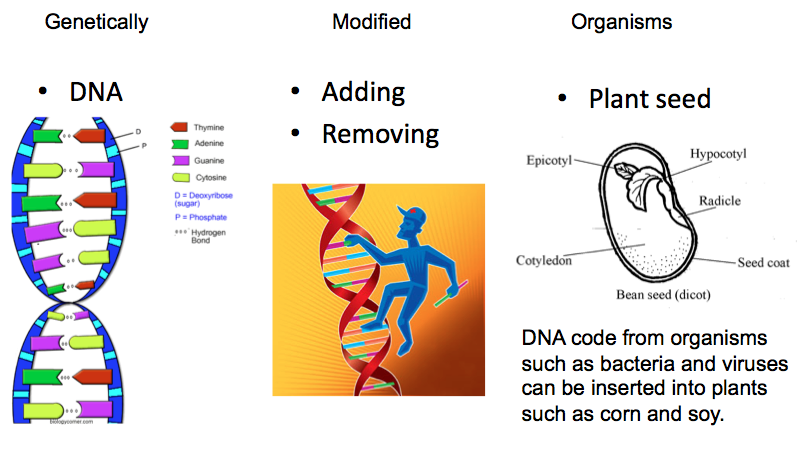
www.responsibletechnology.org
- Copyright © The Institute
for Responsible Technology
Genetically modified organisms (GMOs) are
one of the most dangerous and radical changes to our food supply. These
largely unregulated ingredients found in 60-70% of the foods in the US, are
well worth the effort to avoid them.
Genetically Modified Organisms (GMOs)
are
the result of laboratory processes which artificially insert foreign genes into
the DNA of food crops or animals. Those genes may come from bacteria,
viruses, insects, animals or even humans. GMOs are not safe, but have been
in the food supply since 1996. Most Americans say they would not eat GMOs
if labeled, but the U.S. does not require labeling.
Many consumers in the US
mistakenly believe that the FDA approves GM foods through rigorous,
in-depth, long-term studies. In reality, the agency has absolutely no safety
testing requirements. Instead the agency relies on research from companies
like Monsanto, research that is meticulously designed to avoid finding
problems…
…The overwhelming consensus among the FDA’s own scientists
was that GM foods were quite different and could lead to unpredictable and
hard-to-detect allergens, toxins, new diseases and nutritional problems.
Did you know... since
1996 Americans have been eating genetically modified (GM) ingredients in most
processed foods.
Did you know... GM
plants, such as soybean, corn, cottonseed, and canola have had foreign genes
forced into their DNA. And the inserted genes come from species, such as
bacteria and viruses, that have never been in the human food supply.
Did you know... genetically
modified organisms (GMOs) are not safe. They have been linked to thousands
of toxic and allergenic reactions, thousands of sick, sterile, and dead
livestock, and damage to virtually every organ and system studied in lab
animals…
A GMO (genetically modified organism) is the result
of a laboratory process of taking genes from one species and inserting them
into another in an attempt to obtain a desired trait or characteristic,
hence they are also known as transgenic organisms. This process may be
called either Genetic Engineering (GE) or Genetic Modification (GM); they
are one and the same.
But haven't growers been grafting trees, breeding animals, and hybridizing
seeds for years?
Genetic engineering is
completely different from traditional breeding and carries unique risks. In
traditional breeding it is possible to mate a pig with another pig to get a
new variety, but is not possible to mate a pig with a potato or a mouse.
Even when species that may seem to be closely related do succeed in
breeding, the offspring are usually infertile. A horse, for example, can
mate with a donkey, but the offspring (a mule) is sterile.
With genetic engineering, scientists can breach
species barriers set up by nature. For example, they have spliced fish genes
into tomatoes. The results are plants (or animals) with traits that would be
virtually impossible to obtain with natural processes, such as crossbreeding
or grafting.
What combinations have been tried?
It is now possible for
plants to be engineered with genes taken from bacteria, viruses, insects,
animals or even humans. Scientists have worked on some interesting
combinations:
- Spider genes were inserted into goat DNA, in
hopes that the goat milk would contain spider web protein for use in
bulletproof vests.
- Cow genes turned pigskins into cowhides.
- Jellyfish genes lit up pigs' noses in the dark.
- Arctic fish genes gave tomatoes and strawberries
tolerance to frost.
- Potatoes that glowed in the dark when they
needed watering.
- Human genes were inserted into corn to produce
spermicide.
Current field trials include:
- Corn engineered with human genes (Dow)
- Sugarcane engineered with human genes (Hawaii
Agriculture Research Center)
- Corn engineered with jellyfish genes (Stanford
University)
- Tobacco engineered with lettuce genes
(University of Hawaii)
- Rice engineered with human genes (Applied
Phytologics)
- Corn engineered with hepatitis virus genes
(Prodigene)
top
Reference -
SeedsDeception.pdf
View
(PDF) handout on the health risks of genetically modified foods
www.centerforfoodsafety
© CENTER FOR FOOD SAFETY
A number of studies over the past decade
have revealed that genetically engineered foods can pose serious risks to
humans, domesticated animals, wildlife and the environment. Human health
effects can include higher risks of toxicity, allergenicity, antibiotic
resistance, immune-suppression and cancer.
Currently, up to 40 percent of U.S. corn is
genetically engineered, as are 80 percent of soybeans.
It has been
estimated that upwards of 60 percent of processed foods on supermarket
shelves--from soda to soup, crackers to condiments--contain genetically
engineered ingredients...
top
GMOs and The
Christian Perspective
gmo-journal.com
GM Foods: The
Christian Perspective
-
Christian theologians and scholars
find themselves conflicted on the issue of GMOs.
Not surprisingly because one of the tenets of
Christianity is to help those in need and
to feed the hungry. However, certain of the Church’s Social Teachings, found
in scripture, in theological reflection, in ecclesiastic documents and in
the witness of individuals and communities, stress respect for human rights
and respect for the environment. Because there are unknown risks with GMOs
with respect to health and the environment, and because there are many other
considerations such as corporate ownership and control of the GM seeds that
many say will enslave poor farmers to the GM companies, many Christian
theologians either advocate
following a precautionary principle or
reject the use of GMOs entirely.
Read in entirety…gmo-journal.com
www.academia.edu - GMO and Christian Faith Theological and Ethical Aspects
Abstract:
The advance of natural science in Western countries of the past 250 years
can, to some extent, be traced to a positive attitude of the mainstream
Judeo-Christian intellectual heritage to physical creation. Christian
theologians and secular thinkers (including scientists), though, are divided
as to how far science, or in this case the GMO research can go before humans
start defying the Creator. Their bioethical reflection is being conditioned
by their respective worldviews. Many Christian thinkers tend to view any
genetic manipulation as an illegitimate tampering of the human “creative
genius” in the marvelous and “essentially (genetically) complete” work of
the Creator; most of the secular scientists, on the other hand, consider
their Christian counterparts as “seriously uninformed” at best, or
“superstitiously conservative” at worse, with no ability or desire to
contribute to the progress of human society.
Their respective
prejudices are expressed in an atmosphere of suspicion and contempt for the
other, thus confusing the minds of the general public. The differences in
reasoning between the GMO scientists (among others) and Christian
theologians, however, can become a creative tension that will enhance
authentic search for meaning (i.e. sustainable ethical values and goals of
human endeavor) and truth (including the economic and social prospects of
the new discoveries) if the alienated camps learn to communicate and respect
each other. Those Christian theologians, who properly understand the
Christian theology of creation, might be able to perceive the field of
genetics, including genetic engineering, as a legitimate expression of human
intellectual capabilities and creative potential and as a specific
realization of God’s invitation to partnership in His creative work within
the creation continua. The latter can be maintained, however, only provided
that the scientific research goes hand in hand with the research of the
ethical implications of such endeavors in their complexity – including the
sociological, environmental, economic, medical, and other aspects. To ensure
this, an open, honest, and competent public discussion of these issues is
necessary.
Read in its entirety…www.academia.edu
top
GMO's Safety
Concerns
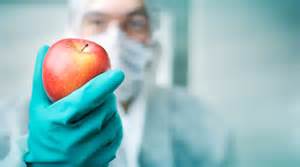
www.nongmoproject.org © NON-GMO PROJECT
Are GMOs safe?
-
Most developed nations do not
consider GMOs to be safe.
In more than 60 countries around the world,
including Australia, Japan, and all of the countries in the European Union,
there are significant restrictions
or
outright bans on the production and sale of GMOs. In the U.S., the
government has approved GMOs based on studies conducted by the same
corporations that created them and profit from their sale. Increasingly,
Americans are taking matters into their own hands and choosing to opt out of
the GMO experiment.
www.nationofchange.org
© NATIONOFCHANGE - Reports,
Following the groundbreaking French
study that graphically linked the
lifetime consumption of Monsanto’s GMO corn in rats to massive tumors and
direct organ failure, Russia’s premiere consumers rights organization has
suspended both the importation
and use of Monsanto’s GMO corn within the nation’s borders.
It seems that France has become somewhat of a consumer health watchdog in
more than just one area, simultaneously tackling the issue of pesticide
contamination as well. It was even announced that the French government was
seeking to ban crop dusters in all areas possible, aiming to reduce the
amount of obesity-linked
pesticides within the food supply.
Meanwhile, Monsanto is continuing to stick to its tired statements regarding
the ‘safety’ of its GMO crops and Roundup herbicide. Instead of discussing
not only the French study finding that the company’s GMOs led to horrendous
tumors that led to rats literally dragging them along the ground as they
walked, they claim that the information ‘does not warrant’ any concern at
all from European officials. Just as Monsanto (and the US government)
ignored evidence linking Roundup to DNA
damage and infertility,
it appears they intend to do it once more and hope that it all goes away.
Unfortunately for Monsanto, it’s not going away this time.
With Russia now acting to secure food safety, many other nations will surely
follow. While the United States may continue to ignore the issues
surrounding GMOs and Monsanto’s blatant disregard for human health (they
were caught running ‘slave-like’ working rings, after all), many foreign
nations will not. Countries like Poland, Peru,
and Hungary have already taken action in banning or removing Monsanto’s GMO
crops.
And even in the United States grassroots movements have spawned bills like
Proposition 37 –the monumental bill in California that seeks to label GMOs…
Retrieved From -
www.aaemonline.org
- American Academy of
Environmental Medicine
Despite these differences, safety assessment of GM foods has been based on
the idea of "substantial equivalence" such that "if a new food is found to
be substantially equivalent in composition and nutritional characteristics
to an existing food, it can be regarded as safe as the conventional food."4 However,
several animal studies indicate serious health risks associated with GM food
consumption including infertility, immune dysregulation, accelerated aging,
dysregulation of genes associated with cholesterol synthesis, insulin
regulation, cell signaling, and protein formation, and changes in the liver,
kidney, spleen and gastrointestinal system.
There is more than a casual association between GM foods and adverse health
effects. There is causation as defined by Hill's Criteria in the areas of
strength of association, consistency, specificity, biological gradient, and
biological plausibility.5 The strength of association and
consistency between GM foods and disease is confirmed in several animal
studies. 2,6,7,8,9,10,11
In spite of this risk, the biotechnology industry claims that GM foods can
feed the world through production of higher crop yields. However, a recent
report by the Union of Concerned Scientists reviewed 12 academic studies and
indicates otherwise: "The several thousand field trials over the last 20
years for genes aimed at increasing operational or intrinsic yield (of
crops) indicate a significant undertaking. Yet none of these field trials
have resulted in increased yield in commercialized major food/feed crops,
with the exception of Bt corn."12 However, it was further stated
that this increase is largely due to traditional breeding improvements.
Therefore, because GM foods pose a serious health risk in the areas of
toxicology, allergy and immune function, reproductive health, and metabolic,
physiologic and genetic health
and are without benefit ,
the AAEM believes that it is imperative to adopt the precautionary
principle, which is one of the main regulatory tools of the European Union
environmental and health policy and serves as a foundation for several
international agreements.13 The most commonly used definition is
from the 1992 Rio Declaration that states: "In order to protect the
environment, the precautionary approach shall be widely applied by States
according to their capabilities. Where there are threats of serious or
irreversible damage, lack of full scientific certainty shall not be used as
a reason for postponing cost-effective measures to prevent environmental
degradation."13
Another often used definition originated from an
environmental meeting in the United States in 1998 stating: "When an
activity raises threats to the environment or human health, precautionary
measures should be taken, even if some cause and effect relationships are
not fully established scientifically. In this context, the proponent of an
activity, rather than the public, should bear the burden of proof (of the
safety of the activity)."13
“Call
to Action”:
With the precautionary principle in mind, because
GM foods have not been properly tested for human consumption, and
because there is ample evidence of probable harm, the AAEM asks:
-
Physicians to educate their patients, the medical community, and the
public to avoid GM foods when possible and provide educational materials
concerning GM foods and health risks.
-
Physicians to consider the possible role of GM foods in the disease
processes of the patients they treat and to document any changes in
patient health when changing from GM food to non-GM food.
-
Our members, the medical community, and the independent scientific
community to gather case studies potentially related to GM food
consumption and health effects, begin epidemiological research to
investigate the role of GM foods on human health, and conduct safe
methods of determining the effect of GM foods on human health.
-
For a moratorium on GM food, implementation of immediate long term
independent safety testing, and labeling of GM foods, which is necessary
for the health and safety of consumers.
What are the impacts of GMOs on the environment?
www.nongmoproject.org © NON-GMO
PROJECT
Over 80% of all GMOs grown worldwide are engineered for herbicide tolerance.
As a result, use of toxic herbicides like Roundup has increased 15 times
since GMOs were introduced. GMO crops are also responsible for the emergence
of “super weeds” and “super bugs:’ which can only be killed with ever more
toxic poisons like 2,4-D (a major ingredient in Agent Orange). GMOs are a
direct extension of chemical agriculture, and are developed and sold by the
world’s biggest chemical companies. The long-term impacts of GMOs are
unknown, and once released into the environment these novel organisms cannot
be recalled.
Link
to Environmental Toxins for Additional Information.
top
How
to Safeguard Yourself from GMO's
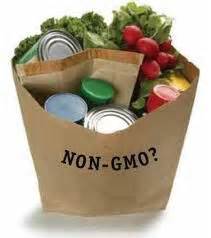
www.nongmoshoppingguide.com
Portable pocket shoppers' guide
-
Our revised Non-GMO Shopping Guide has features
over 150 brands currently enrolled in the Non-GMO Project. This
purse/pocket-sized guide will help you identify and avoid foods that contain
genetically modified organisms (GMOs) foods while you shop.
DOWNLOAD GUIDE
www.nongmoproject.org
The Non-GMO Project is a non-profit organization with a mission of
protecting the non-GMO food supply and giving consumers an informed choice.
We offer North America’s ONLY third party verification for products produced
according to rigorous best practices for GMO avoidance (for more info, click
here).
Our strategy is to empower consumers to make change through the marketplace.
If people stop buying GMOs,
companies will stop using them and farmers will stop growing them.
Please click
here to download the Non-GMO
Project verified product code spreadsheet (07/16/2014)
top
How Can Consumers Avoid GMOs?
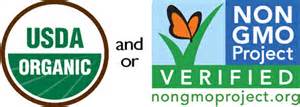
www.nongmoproject.org
© NON-GMO PROJECT
Are GMOs
labeled? -
Unfortunately, even though polls consistently show that a significant
majority of Americans want to know if the food they’re purchasing contains
GMOs, the powerful biotech lobby has succeeded in keeping this information
from the public. In the absence of mandatory labeling, the Non-GMO Project
was created to give consumers the informed choice they deserve.
Do Americans
want non-GMO foods and supplements?
- Polls consistently show that a significant majority of North Americans
would like to be able to tell if the food they’re purchasing contains GMOs
(a 2012 Mellman Group poll found that 91% of American consumers wanted GMOs
labeled). And, according to a recent CBS/New York Times poll, 53% of
consumers said they would not buy food that has been genetically modified.
The Non-GMO Project’s seal for verified products will, for the first time,
give the public an opportunity to make an informed choice when it comes to
GMOs.
How common are
GMOs? - In
the U.S., GMOs are in
as much as 80%
of conventional processed food. Click
here for a current list of GMO risk crops.
How can I avoid GMOs?
- Choose food and products that are Non-GMO Project Verified! Click
here to see a complete list and follow
the following tips:
-
Buy Organic
-
Certified organic products cannot
intentionally include any GMO ingredients. Buy products labeled “100%
organic,” “organic,” or “made with organic ingredients.” You can be doubly
sure if the product also has a Non-GMO Project Verified Seal.
-
Avoid at-risk ingredients
- If it’s not labeled organic or verified non-GMO: Avoid products made with
ingredients that might be derived from GMOs (see list). The eight GM food
crops are Corn, Soybeans, Canola, Cottonseed, Sugar Beets, Hawaiian Papaya
(most) and a small amount of Zucchini and Yellow Squash.
-
Sugar -
If a non-organic product made in North American lists “sugar” as an
ingredient (and NOT pure cane sugar), then it is almost certainly a
combination of sugar from both sugar cane and GM sugar beets.
-
Dairy Products
- may be from cows injected with GM bovine growth hormone. Look for labels
stating No rBGH, rBST, or artificial hormones.
-
Download Non-GMO Shopping Guides
-
The
Non-GMO Shopping Guide has features over 150 brands currently enrolled in
the Non-GMO Project. This purse/pocket-sized guide will help you identify
and avoid foods that contain genetically modified organisms (GMOs) foods
while you shop.
-
Look for Non-GMO Project Seals
- Products that carry the Non-GMO Project Seal are independently verified to
be in compliance with North America’s only third party standard for GMO
avoidance, including testing of at-risk ingredients. The Non-GMO Project is
a non-profit organization committed to providing consumers with clearly
labeled and independently verified non-GMO choices. Look for dairy products
labeled "No rBGH or rBST,” or “artificial hormone-free.”
 What does
“Non-GMO Project Verified seal” mean? What does
“Non-GMO Project Verified seal” mean?
The verification seal indicates that the product
bearing the seal has gone through our verification process. Our verification
is an assurance that a product has been produced according to
consensus-based best practices for GMO avoidance:
What about the other products that I see on the store shelf that claim they
are “GMO free?”
While you may see other claims regarding GMO
status (e.g. “GMO free”), these are really not legally or scientifically
defensible, and they are not verified by a third party. The Non-GMO Project
is the only
organization offering independent verification of testing and GMO controls
for products in the U.S. and Canada. Buying products that are verified by
our program is the best way to support the sustained availability of non-GMO
choices in North America.
Are products bearing the “Non-GMO Project Verified” seal GMO free?
Unfortunately, “GMO free” and similar claims are not legally or
scientifically defensible due to limitations of testing methodology.
In addition, the risk of contamination to seeds, crops, ingredients and
products is too high to reliably claim that a product is “GMO free.” The
Project’s claim offers a true statement acknowledging the reality of
contamination risk, but assuring the shopper that the product in question is
in compliance with the Project’s rigorous standard.
The website url is included as part of the Seal to ensure that there is
transparency for consumers who want to learn more about our verification.
While the Non-GMO Project’s verification seal is not a “GMO free” claim, it is trustworthy,
defensible, transparent, and North America’s only
independent verification for
products made according to best practices for GMO avoidance.
How do GMOs affect farmers?
-
Because GMOs are novel life forms, biotechnology companies have been able to
obtain patents with which to restrict their use. As a result, the companies
that make GMOs now have the power to sue farmers whose fields are
contaminated with GMOs, even when it is the result of inevitable drift from
neighboring fields. GMOs therefore pose a serious threat to farmer
sovereignty and to the national food security of any country where they are
grown, including the United States.
top
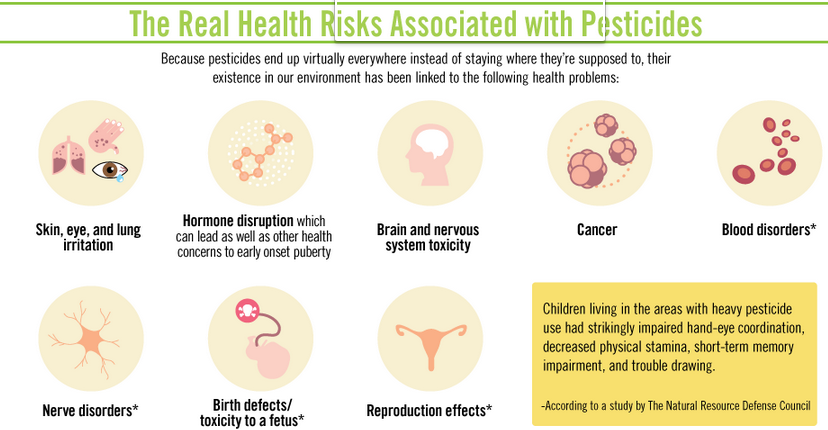
cspinet.org
- Center for Science in the Public Interest
Summary Listing and Detail Explanation of the Safety of
All Additives. View food additives to determine their safety, rated as
follows:
-
Safe - The
additive appears to be safe.
-
Cut Back -
Not toxic, but large amounts may be unsafe or promote bad nutrition.
-
Caution - May
pose a risk and needs to be better tested. Try to avoid.
-
Certain People Should
Avoid - May trigger an acute, allergic reaction, intolerance, or
other problems.
-
Avoid - Unsafe in
amounts consumed or is very poorly tested and not worth any risk.
www.responsibletechnology.org
Copyright © The Institute for
Responsible Technology
It was “supposed” to be harmless to humans and animals—the perfect weed
killer. Now a groundbreaking article just published in the journal Entropy
points to Monsanto’s Roundup herbicide, and more specifically its active
ingredient glyphosate, as devastating—possibly “the most important factor in
the development of multiple chronic
diseases and conditions that have become prevalent in Westernized societies.”
That’s right. The herbicide sprayed on most of the world’s genetically
engineered crops—and which gets soaked into the food portion—is now
linked to “autism … gastrointestinal issues such as inflammatory bowel
disease, chronic diarrhea, colitis and Crohn’s disease, obesity,
cardiovascular disease, depression, cancer, cachexia, Alzheimer’s disease,
Parkinson’s disease, multiple sclerosis, and ALS, among others .”
www.thedailygreen.com
Reports,
Top 12 Foods to Eat Organic:
Not all of us can afford to go 100% organic. The solution? Focus on just those
foods that come with the heaviest burden of pesticides, chemicals, additives and
hormones.
top
Let Your Voice Be
Heard
www.responsibletechnology.org
When a comprehensive two-year study showed that
Monsanto’s Roundup Ready corn, and even Roundup by itself, caused massive
tumors, organ damage, and early death of rats, Monsanto’s minions jumped
into high gear with a shoot-the-messenger, kill-the-study campaign. Now the
study’s lead author, Professor Gilles-Eric Séralini, is fighting back. He’s
filed a libel lawsuit against some of the “so-called scientist” attackers.
A global petition has been
launched demanding that approvals of GM foods be frozen until studies
proving long-term safety are conducted and verified. Sign
the petition and
visit this terrific new website:
GMOseralini.org that
completely shreds the biotech industry’s arguments. A
bottom-line summary of the study’s findings is: Definitely Avoid Eating
GMOs.
top
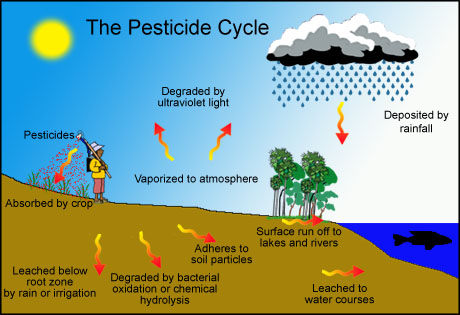
www.cdc.gov
- factsheets - perchlorate
Sources of
Perchlorate and How are People Exposed
-
Perchlorate
is a chemical most commonly used in rocket fuel. The chemical is also used
in explosives and fireworks. A combination of human activity and natural
sources has led to the widespread presence of perchlorate in the
environment.
- People
are exposed to perchlorate by drinking water or eating food containing
perchlorate or by working in the manufacture of products containing
perchlorate.
www.atsdr.cdc.gov-pdf -
U.S.
Department of Health and Human Services Public Health Service Agency for Toxic
Substances and Disease Registry
Perchlorate has been found in food,
including cow’s milk, and in water. Human exposure to perchlorate is
expected to occur through the ingestion of food and milk. The Food and
Drug Administration (FDA) recently estimated that the US population ingests from
0.08-to 0.39-μg/kg/day perchlorate from food items.
Human exposure to perchlorate also can occur
through the ingestion of water, as it has been found in drinking water
supplies, tap water samples, and groundwater at some locations.
Efforts are being made to determine the relative contribution of perchlorate
from food and water.
Sources of perchlorates
include rocket fuel, flares, gunpowder, temporary adhesives, electrolysis
baths, batteries, drying agents, etching agents, oxygen generating systems,
matches, chlorine and chlorine based cleaners, and pool chlorination
chemicals.
Toxicokinetics:
Perchlorate appears to be readily absorbed by the digestive
system after oral exposure and enters the bloodstream within a few hours of
ingestion.
Perchlorate
is rapidly taken up into the thyroid gland by an active transport mechanism.
Perchlorate
does not appear to be modified in the body, either by degradation or covalent
binding.
Perchlorate
is rapidly eliminated from the body in the urine with half-times of
approximately 8-12 hours in humans.
However,
recent studies have shown widespread exposure to low levels of perchlorate by
the general population, so exposure may be frequent.
Routes of Exposure
-
Ingestion
(drinking contaminated water, eating contaminated food including milk).
-
Inhalation
(breathing dusts or suspended particles).
-
Dermal
(contact with contaminated soil).
Perchlorate in the
Environment – Where Does It Come From
Perchlorate has been found in food,
including cow’s milk, and in water. Factories that make or use perchlorates
may release them. Perchlorate entered the environment where rockets were made,
tested, and disassembled and from fireworks, explosives, flares, and similar
products. Also, perchlorate is an impurity in certain industrial and consumer
products, such as cleansers and bleaches, which also may result in its discharge
to the environment.
Perchlorate also occurs naturally in the
environment. Perchlorate released to the environment is deposited in soil or
water (rivers, streams, lakes, and ponds) and can leach into groundwater from
soil.
Perchlorate has been found in a wide variety
of foods including eggs, milk, vegetables, and fruits.
Perchlorate will persist in water and soil
for several years, but may eventually be degraded by microorganisms.
Environmental
Levels - Food
Perchlorate has been found in a wide variety
of foods consumed by the U.S. population. The FDA’s Total Diet Study revealed
that 74% of the foods analyzed had at least one sample of detected perchlorate.
Estimation of dietary intake showed the lowest intake to be 0.08–0.11 μg/kg/day for males aged 25–30
years and the highest intake to be 0.35–0.39 μg/kg/day for children 2
years old.
The majority of the perchlorate estimated
intake by infants 6-11 months comes from baby foods, such as infant formula
and dairy foods. Dairy foods contribute about half of the total estimated daily
intake of perchlorate by children 2, 6, and 10 years old. Vegetables and dairy
foods combined account for between 46% and 59% of the total estimated intake of
perchlorate by teenagers and adults.
top
www.atsdr.cdc.gov-pdf
The main target organ for perchlorate
toxicity in humans is the thyroid gland. Perchlorate inhibits the thyroid’s
uptake of iodine. Iodine is required as a building block for the synthesis of
thyroid hormone.
Thyroid hormones regulate certain body
functions after they are released into the blood. These include metabolism,
growth and neurological development in children.
Exposure of people to excessive amounts
of perchlorate for a long time may lower the thyroid activity, leading to a
condition called hypothyroidism. The prevalence of
hypothyroidism is about 5% in the general population of the United States, but
there is no evidence that any of this percentage is due to perchlorate exposure.
Because thyroid hormones play a critical
role in the neurological development of the fetus, there is concern that
hypothyroidism (maternal and fetal) during pregnancy could result in
neurodevelopmental effects.
It is relevant to point out that other
chemicals in the diet and in tobacco smoke also can affect the thyroid gland in
ways similar to perchlorate.
Children’s
Health
The most sensitive population is fetuses of
pregnant women who might have hypothyroidism or iodide deficiency.
Infants and developing children may be more
likely to be affected by perchlorate than adults because thyroid hormones are
essential for normal growth and development.
www.cfsan.fda.gov
Health
Risks from Perchlorate
Human exposure to
sufficiently high doses of perchlorate may disrupt how the thyroid gland
functions. In adults, the thyroid plays an important role in metabolism, making
and storing hormones that help regulate the heart rate, blood pressure, body
temperature, and the rate at which food is converted into energy. In fetuses and
infants, thyroid hormones are critical for normal growth and development of the
central nervous system. Perchlorate can interfere with the human body's ability
to absorb iodine into the thyroid gland which is a critical element in the
production of thyroid hormone.
top
Health Risks of Farm Raised Salmon
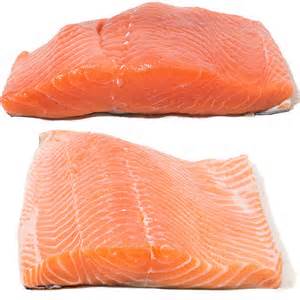
Retrieved From -
www.albany.edu
- Institute
for Health and the Environment, University at Albany
In the
most comprehensive analysis of farmed and wild salmon to date,
researchers analyzed toxic contaminants in approximately 700 farmed and wild
salmon (totaling 2 metric tons) collected from around the world to be
representative of the salmon typically available to consumers. The study,
which was sponsored by the Pew Charitable Trusts, examined salmon produced
in eight major farmed salmon producing regions and obtained from retail
outlets in 16 major North American and European cities.
The study found that concentrations of several
contaminants associated with serious
health risks from neurological effects to cancer are significantly higher in
farmed salmon than in wild salmon.
The authors concluded that concentrations of several cancer-causing
substances are high enough to suggest that consumers should consider
restricting their consumption of farmed salmon. In most cases, consumption
of more than one meal of farmed salmon per month could pose unacceptable
cancer risks according to U.S. Environmental Protection Agency (EPA) methods
for calculating fish consumption advisories.
In General:
Total PCBs, dioxins, dieldrin,
and toxaphene were
consistently and significantly more concentrated in the farmed salmon as a
group than in the wild salmon.
Farmed salmon from Europe were more contaminated than
farmed salmon from North or South America. The most contaminated farmed
samples came from Scotland and the Faroe Islands in the North Atlantic. The
least contaminated farmed samples came from Chile and Washington State in
the U.S. But these still had significantly higher contaminant levels than
wild salmon.
Store-bought samples from Frankfurt, Edinburgh, Paris,
London, and Oslo were generally the most contaminated. Samples from stores
in New Orleans and Denver were the least contaminated. Store-bought samples
from Boston, San Francisco, and Toronto had contaminant levels approaching
those found in European cities. (Most of the salmon sold in Europe is
produced on European farms.
More salmon sold in the U.S. is produced in Chile
or Canada with lower contaminant levels.)
The large difference in
farmed and wild salmon contaminant concentrations is likely due to diet.
While wild salmon eat a large variety of aquatic organisms where they feed
such as krill, zooplankton, and small fish, farmed salmon consume a
formulated high-fat feed primarily of other fish ground into fishmeal and
fish oil. As a result, farmed salmon consume and concentrate in their fat
tissue more of the contaminants typically found in other fish…A summary
of the study is available here.
Retrieved From -
www.puresalmon.org
In 1999, the World
Health Organization raised food safety concerns over fish farming, including
salmon, 1 warning
that this growing practice posed risks to public health. Artificial
coloring, toxic by-products, and cancer causing contaminants have all been
found in factory farmed salmon. The United States currently imports
approximately 200,000 tons of farmed salmon annually,
2 but very
little of it is ever tested for diseases or chemical contaminants. Although
the U.S. Food and Drug Administration considered testing farmed salmon for
antibiotics, pesticides, or possible carcinogens—all of which are used by
many overseas salmon farms—those plans are on hold.3
Artificial Color
- Industrial salmon farms use artificial
color to make farmed fish—whose flesh is typically grayish white—appear a
more appetizing “salmon” pink. Market research found that consumers “buy
with their eyes” and put a premium on color. Since 1982, the use of
artificial coloring in farmed salmon has more than tripled.4 One
of the most commonly used dyes, Canthaxanthin, has been linked to human eye
defects and retinal damage.
Lower
Nutritional Value in Farmed Salmon vs. Wild
- A close reading of supermarket labels shows
that some wild salmon, high in “heart-healthy,” Omega-3 fatty acids, contain
less than 1 percent fat. In contrast, factory farmed fish can be as high as
27 percent fat and contain 15 percent less protein. Despite efforts by
governments and international agencies to limit antibiotics, harmful
chemicals, and toxic substances in farmed salmon, the danger persists.
Millions of fish—raised in close confinement, eating an unvaried artificial
diet, and constantly exposed to their own wastes—mean inevitable exposure to
harmful chemicals.
www.ewg.org - Copyright Environmental Working Group.
TUESDAY, FEBRUARY
1, 2005 The Washington
Post reports that half the fish consumed worldwide will be farm-raised
instead of wild-caught by the year 2025, exposing Americans to more fish
with plenty of healthy omega-3s and dangerous levels of toxic PCBs…
The Environmental Working Group conducted studies
on farmed salmon from grocery stores and found on average 16 times the
dioxin-like PCBs found in wild salmon. Farmed salmon is likely the most
PCB-contaminated protein source in the U.S. food supply. PCBs cause cancer
and were banned in the United States in 1976.
Recommendations to Protect Yourself:
Retrieved from -
www.albany.edu -
Institute for Health and the Environment, University at Albany
-
Farmed salmon should be
consumed in limited amounts. Consumers should be aware that consumption
of even one or two meals of farmed salmon per month may exceed
acceptable contaminant levels;
-
Farmed salmon should always be clearly labeled as
"farmed;" and
-
The country of origin of all farmed salmon should
be clearly identified.
-
Further studies of contaminant sources,
particularly on feeds used for farmed carnivorous fish species such as
salmon, are needed.
-
Given the overall
contaminant levels identified in the study, EPA and many state
consumption advisories would suggest that consumers restrict their
consumption of farmed salmon to on average no more than one meal per
month. However, consumers need to be aware that in some cases even that
could exceed advised contaminant exposure levels.
-
Consumers should be
aware that the word "Fresh" on the label does not mean the salmon is
wild-caught from the ocean.
-
Any salmon
labeled "Atlantic" in the U.S. is almost always farmed. Salmon labeled
"Atlantic" in other countries is most likely farmed.
-
Since
contaminants build up in the fatty tissue of the fish, consumers may be
able to reduce their consumption of contaminants in farmed salmon by
following the recommendations of many state governments and the federal
government to remove as much skin and visible fat as possible. However,
it is difficult to determine how much of the contaminant load can be
removed in this way.
Find additional information at
www.farmedanddangerous.org
www.foodandwaterwatch.org © Food &
Water Watch
-
Always ask where
seafood comes from and whether it was wild-caught or farmed? For
example, choose wild-caught, or otherwise sustainably produced, domestic
shrimp over imported farmed shrimp. Even if the person you ask does not
know, your question will help encourage the establishment to become more
knowledge about seafood sourcing.
-
Tell the FDA to
increase inspection of imported seafood.
-
Ask Congress to
increase funding and oversight for the FDA’s seafood import inspection
program.
-
Tell the USDA to
expand country-of-origin labeling so that it includes processed seafood
and includes every store and restaurant.
top
Food Health Risks
Mercury in Fish
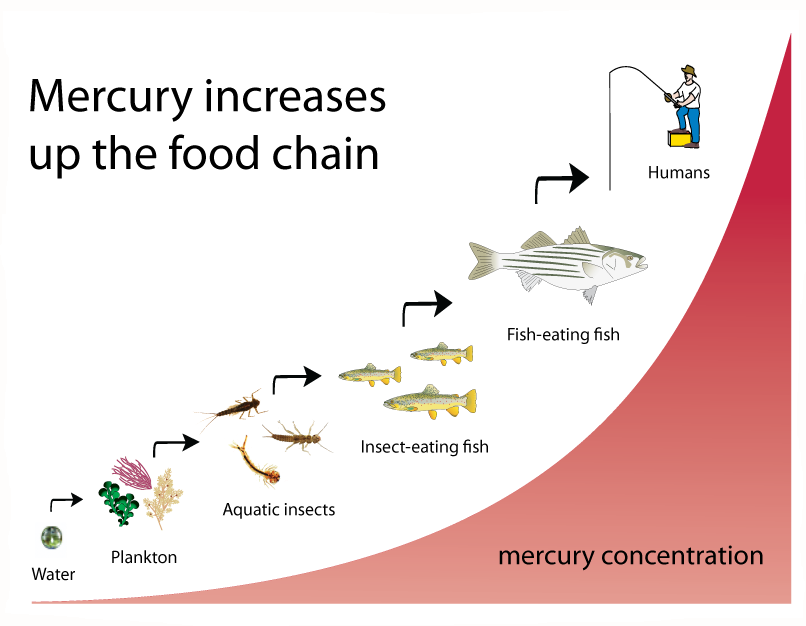
Reference
www.edf.org
-
Copyright © Environmental Defense Fund. Used by permission.
Mercury
is released into the air primarily from industrial sources, falls to the ground
in rain or snow and is deposited into water bodies, where it is converted into
another highly toxic form of mercury (called methyl mercury). Methlymercury then
builds up in the tissues of fish and other animals, and in high concentrations
can pose serious health risks to people who frequently eat contaminated fish.
Based on the available data on mercury concentrations in fish tissue,
Environmental Defense recommends limited consumption of certain fish (see
chart).
top
What Are
the Health Risks Associated With Consuming Mercury-Contaminated Fish?
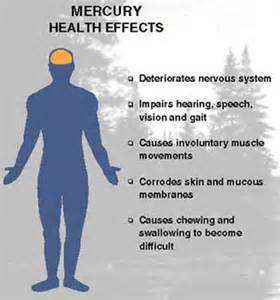
Reference
www.edf.org
-
Copyright © Environmental Defense Fund. Used by permission.
Mercury
targets the nervous system and kidneys. Developing fetuses, infants and young
children are at the highest risk from mercury exposure, since their brains and
nervous systems are still forming. Fetuses can absorb mercury directly across
the placenta, and nursing infants can get it from their mother's breast milk.
This is why it is so important for women of childbearing age to minimize their
consumption of fish with high mercury levels. It can take 12-18 months for women
in their childbearing years to significantly rid their body burden of
methylmercury.
Children
exposed to mercury before birth may exhibit problems with mental development and
coordination, including how they think, learn and problem-solve later in life.
These neurological symptoms may appear similar to cerebral palsy. Developmental
and neurological damage can be irreversible for fetuses and young children, but
as children get older, the risk associated with mercury exposure decreases.
Mercury
exposure can also harm adults. Symptoms can include numbness, burning or
tingling of the extremities (lips, fingers, toes); fatigue; weakness;
irritability; shyness; loss of memory and coordination; tremors; and changes in
hearing and blurred vision. Extremely high mercury levels can permanently damage
an adult's brain and kidneys, or even lead to circulatory failure.
How Can
I Reduce the Risks of Eating Seafood Contaminated With Mercury?
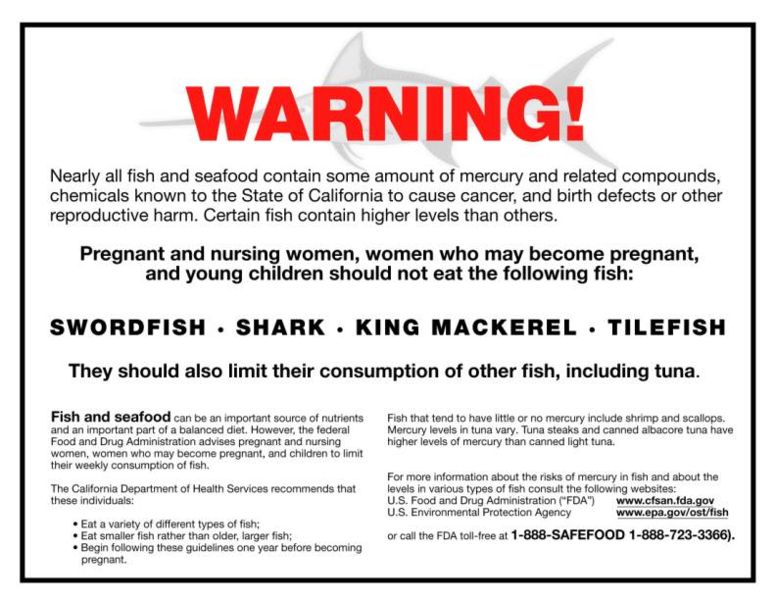
Since
methylmercury binds to proteins, it is found throughout fish tissue, including
muscle tissue that makes up fish steaks and fillets. Therefore, cleaning and
cooking methods that can reduce amounts of other contaminants (like trimming fat
and removing skin and organs) are not successful in reducing mercury levels in
fish.
The
best way to reduce exposure to methylmercury is to moderate or eliminate your
consumption of predatory or long-lived fish (such as swordfish,
shark, orange
roughy and tuna).
Refer to Health
Alerts to see which species are known to have high levels of mercury.
Be especially conservative if you are a woman of childbearing age or are feeding
young children.
What
Fish Should I Avoid?
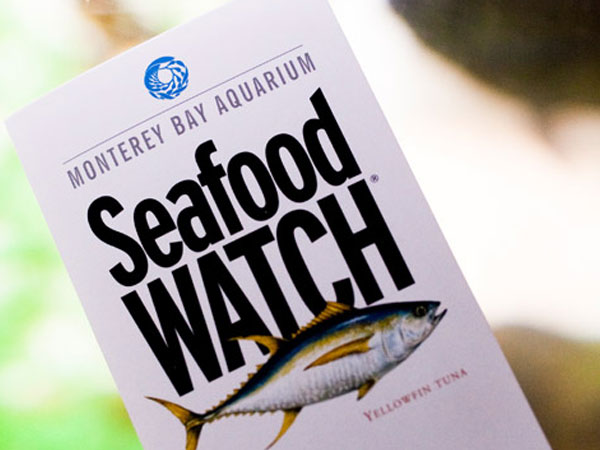
Fish
low in contaminants are an important part of a healthy diet. That's why Environmental
Defense recommends limited consumption of certain fish because of their
elevated mercury levels.
Content
provided from www.epa.gov
- fish advice.pdf
Environmental
Protection Agency - Mercury Update: Impact on Fish Advisories – EPA Fact
Sheet: The purpose
of this fact sheet is to summarize current information on sources, fate and
transport, occurrence in human tissues, range of concentrations in fish tissue,
fish advisories, fish consumption limits, toxicity, and regulations for mercury.
To read more…www.epa.gov
- fish advice.pdf
Find Best and
Worst Seafood Choices - Pocket Guides
at
www.montereybayaquarium.orgCarry the pocket guide that’s right for
your region to help you choose ocean-friendly seafood wherever you live or
travel. Click on your state on the map below to determine the pocket
guide that’s right for you. If you live near a boundary between two regions,
we suggest that you look at both pocket guides and pick the one that lists the
seafood items commonly found where you live.
(Download and print here -
http://www.seafoodwatch.org/seafood-recommendations/consumer-guides)
Smart Seafood
Downloadable Pocket Guide - Whether it’s from the Gulf or the
Pacific, New England or the South, get smart about the seafood you’re
eating.
Food & Water Watch has analyzed over 100 different fish
and shellfish to create the only guide assessing not only the human health
and environmental impacts of eating certain seafood, but also the
socio-economic impacts on coastal and fishing communities.
The Seafood Guide addresses the following questions,
which we encourage you to ask before making a seafood purchase:
Guide also recommends safer, more sustainable
options based on your personal tastes and priorities. Print out the card
version, which can fit in your wallet, to always have these valuable tips on
hand when you’re shopping.
Seafood Recommendations
for Consumers
top
Food Health Risks – Aspartame
www.ehow.com
© Demand Media, Inc
Aspartame
is an artificial sweetener that was discovered in 1965. It is currently marketed
under various trademark names, such as NutraSweet, Equal and Canderel and is
used in many diet
soda beverages.
There is an ongoing controversy over the safety
of using aspartame, with some claiming symptoms of aspartame use includes
fibromyalgia, multiple sclerosis symptoms, headaches, dizziness, brain cancer
and menstrual problems. However, the FDA has approved the use of aspartame
and proponents of aspartame claim it is safe.
Risks 1:
Stop using
aspartame
if you have
Phenylketonuria.
Phenylketonuria is a rare metabolic disease that can cause retardation. Aspartame
is considered an additional source of phenylalanine, and those with PKU are
susceptible to dangerous levels of phenylalanine collecting in the body.
Risks 2:
Avoid if you have advanced liver disease.
Damage to the brain can result with high levels of amino acid phenylalanine
in body fluids. Amino acid phenylalanine is a component of aspartame. Those with
advanced liver disease and pregnant women with hyperphenylalanine do not
effectively metabolize this amino acid. Therefore these people should avoid
aspartame.
Risks 3:
Consider headaches a
possibility. Headaches can result for some who
consume aspartame. Although the aspartame website insists there is no concrete
proof that aspartame can trigger headaches in some users, it is a commonly held
belief that some people are sensitive to aspartame, and headaches can result.
top
Chemical
Makeup of Aspartame – The Facts
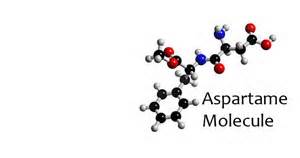
en.wikipedia.org
Upon
ingestion, aspartame breaks down into residual chemicals,
including aspartic acid, phenylalanine, methanol, and further
breakdown products including formaldehyde,[16] formic acid, and a diketopiperazine. There is controversy
surrounding the rate of breakdown into these various products and the effects
that they have on those that consume aspartame-sweetened foods.
Aspartic Acid is an α-amino acid with the chemical formula HO2CCH(NH2)CH2CO2H.
The carboxylate anion of aspartic acid is known as aspartate.
Phenylalanine
is an α-amino acid with the formula HO2CCH(NH2)CH2C6H5,
which is found naturally in the breast milk of mammals and manufactured for food
and drink products and are also sold as nutritional supplements for their
reputed analgesic and antidepressant effects. Phenylalanine is structurally
closely related to dopamine, epinepherine (adrenaline) and tyrosine.
Methanol,
also known as methyl alcohol, carbinol, wood alcohol, wood
naphtha or wood spirits, is a chemical compound with chemical formula
CH3OH (often abbreviated MeOH). It is the simplest alcohol, and is a
light, volatile, colourless, flammable, toxic liquid with a distinctive
odor that is very similar but slightly sweeter than ethanol (drinking alcohol). At
room temperature it is a polar liquid and is used as an antifreeze, solvent,
fuel, and as a denaturant for ethanol. It is also used for producing
biodiesel via transesterification reaction.
Formaldehyde (IUPAC name methanal) is a chemical compound with the
formula H2CO. It is the simplest aldehyde. Formaldehyde exists in
several forms aside from H2CO: the cyclic trimer trioxane and the
polymer paraformaldehyde. It exists in water as the hydrate H2C(OH)2.
Aqueous solutions of formaldehyde are referred to as formalin.
"100%" formalin consists of a saturated solution of formaldehyde
(roughly 40% by mass) in water, with a small amount of stabilizer, usually
methanol to limit oxidation and polymerization. It is produced on a substantial
scale of 6M tons/y.
In
view of its widespread use, toxicity, and volatility, exposure to
formaldehyde is significant consideration for human health.
Biological Occurrence
–
The Facts
Formaldehyde
(and its oligomers and hydrates) are rarely encountered in living organisms.
Methanogenesis proceeds via the equivalent of formaldehyde, but this one-carbon
species is masked as a methylene group in methanopterin. Formaldehyde is the
primary cause of methanol’s toxicity, since methanol is metabolised into
toxic formaldehyde by alcohol dehydrogenase. Formaldehyde is converted to
formic acid in the body.
Formic
acid
is readily metabolized and eliminated by the body. Nonetheless, it has specific toxic
effects; the formic acid and formaldehyde produced as metabolites of methanol are responsible for the optic nerve damage causing blindness seen in methanol
poisoning.[4]
Some chronic effects of formic acid exposure have been documented. Some animal
experiments have demonstrated it to be a mutagen, and chronic
exposure may cause liver or kidney damage. Another possibility with chronic
exposure is development of a skin allergy that manifests upon re-exposure to the
chemical.
Formic
acid
(systematically called methanoic acid) is the simplest carboxylic acid.
Its formula is HCOOH or CH2O2. It is an important
intermediate in chemical synthesis and occurs naturally, most notably in the
venom of bee and ant stings.
In
nature, it is found in the stings and bites of many insects of the order
Hymenoptera, mainly ants and is also present in stinging nettles. It is also a
significant combustion product resulting from alternative fueled vehicles
burning methanol (and ethanol, if contaminated with water) when mixed with
gasoline.[
Phenylalanine
Possible Interactions
Reference Source -
www.umm.edu
- University of Maryland Medical Center
If you are currently being treated with any
of the following medications, you should not use phenylalanine without first
talking to your healthcare provider.
Antidepressant Medications,
Monoamine Oxidase Inhibitors (MAOIs):
Phenylalanine may cause a severe increase in blood pressure in people taking
MAOIs (such as phenelzine, tranylcypromine, pargyline, and selegiline). This
severe increase in blood pressure (also called "hypertensive
crisis") can lead to a heart attack or stroke. For this reason,
individuals taking MAOIs should avoid foods and supplements containing
phenylalanine.
Baclofen:
The
absorption of baclofen, a medication used to relieve muscle spasms, may be
reduced by phenylalanine. Therefore, it is best to avoid taking this medication
with a meal, especially one that is high in protein content, or with
phenylalanine supplements.
Levodopa: A few
case reports suggest that phenylalanine may reduce the effectiveness of levodopa,
a medication used to treat Parkinson's disease. Some researchers speculate that
phenylalanine may interfere with the absorption of this medication. Therefore,
phenylalanine should not be taken at the same time as levodopa.
People with PKU
and women who are lactating or are pregnant should not take phenylalanine
supplements
Doses in excess of 5,000 mg a day may be
toxic and can cause nerve damage. High quantities of
DL-phenylalanine may cause mild side effects such as nausea, heartburn, and
headaches.
top
Retrieved From -
www.mercola.com
…A few of the 90 different documented
symptoms listed in the report as being caused by aspartame include:
Headaches/migraines, dizziness, seizures, nausea, numbness, muscle spasms,
weight gain, rashes, depression, fatigue, irritability, tachycardia, insomnia,
vision problems, hearing loss, heart palpitations, breathing difficulties,
anxiety attacks, slurred speech, loss of taste, tinnitus, vertigo, memory loss,
and joint pain.
According to researchers and physicians
studying the adverse effects of aspartame, the following chronic illnesses can
be triggered or worsened by ingesting of aspartame: Brain tumors, multiple
sclerosis, epilepsy, chronic fatigue syndrome, parkinson's disease, alzheimer's,
mental retardation, lymphoma, birth defects, fibromyalgia, and diabetes.
Aspartame is made up of three chemicals:
aspartic acid, phenylalanine, and methanol. The book "Prescription for
Nutritional Healing," by James and Phyllis Balch, lists aspartame under the
category of "chemical poison." As you shall see, that is exactly what
it is.
Aspartame can be found in thousands of
products such as:
Reference Source -
www.laleva.org
The 1976 Groliers encyclopedia states
cancer
cannot live without phenylalanine. Aspartame is 50% phenylalanine.
The structure of aspartame seems simple, but what a complicated structure
aspartame really is. Two isolated amino acids in aspartame are fused together by
its third component, deadly methanol. In this structure, methanol bonds the two
amino acids together, but when released at a mere 86 degrees Fahrenheit, the
methanol becomes a poisonous free radical.
Methanol breaks down into formic acid and
formaldehyde, embalming fluid. Methanol is a dangerous neurotoxin,
a known
carcinogen, causes retinal damage in the eye, interferes with DNA
replication, and causes birth defects…
top
Why
Diet Pop and Colas Make You Fat and Sick

Reference Source -
www.laleva.org
Diet pop is very acidic, with a pH of
1.5 to 2.5 - that is 100,000 times more acid that your body wants to be.
Aspartame has a pH of 1.5! All life dies at a pH of 4.5.
Because of this your body creates fat cells
to store the extra acid or in this case Aspartame. This is why people who drink
diet pop just get fatter.
Your kidneys are the prime pH balancing
organs in your body. The body wants to have a general pH of about 7. So when you
drink pure water with pH of about 7 or a little higher - you are balancing the
pH in your kidneys, and balancing the general pH in the body. When the pH is
right the body can release and dispose of stored acids, which are filling the
fat cells; This is why some clients have had such drastic weight reductions in
such a short amount of time, just drink water.
Why is pH so important? If your pH is
correct you will have a much less chances of contracting a chronic condition,
such as cancer, arthritis, or even the common cold. There is a direct
correlation between pH and your immune system. The Immune system works at its
most optimal level, when the body pH is 7.0 - or slightly alkaline.
So when you drink just one diet pop - you
drive your pH down, shutting down the immune system, and setting yourself up for
a disease to take hold. Drink just one diet pop or cola, you will then have to
drink 32 glasses of water with a pH of 7 or more to balance your pH.
Scientists have found that healthy people
have body fluids that are slightly alkaline, 7.1 to 7.5 pH.
Scientists and
doctors have also found that over 150 degenerative diseases are linked to
acidity, including cancer, diabetes, arthritis, heart disease, gall and kidney
stones, and many more. All diseases thrive in an acidic, oxygen poor environment.
Keep in mind that a drop in every point on
the pH scale is 10x more acidic than the previous number--i.e. from 7 to 6 is
10x, from 7 to 5 is 100x etc. From 7 to 2 is 100,000x more acidic, colas are in
the approximate 2.5 pH range. Almost no soda (pop) is higher than 3.0.
Diet
sodas are the worst as they have the highest acid content. Actually diet
sodas cause you to gain weight because they alter the blood chemistry, making
changes in your metabolism, leading to a slower metabolic rate. The best liquid
to drink is water.
Most degenerative diseases we call
"Old-Age Diseases" like memory loss, osteoporosis, arthritis,
diabetes, hypertension, and many more are actually life style diseases caused
by acidosis, the lack of supplements, what acids we ingest, what
nutrients we don't ingest, or toxins we don't properly eliminate.
So What Is An Alternative?
Reference Source -
www.laleva.org
Stevia is an
herb that has been used as a sweetener in South America for hundreds of years.
It is calorie - free, and the powdered concentrate is 300 times sweeter than
sugar. Is widely used all over the world. In Japan, for example, it claims 41%
of the sweetener market, including sugar, and was used in Japanese Diet Coke
until the company replaced it with aspartame to "standardize"
worldwide. There have not been any reports of toxicity with stevia, which is
consumed by millions of people daily.
What
To Do If You Think You Have Aspartame Poisoning?
Here is a link to a page with a list of
vitamins, herbs and minerals with the dosages to take to counter and cleanse the
effects of aspartame. http://www.wnho.net/wtdaspartame.htm
top
Antibiotics in Food
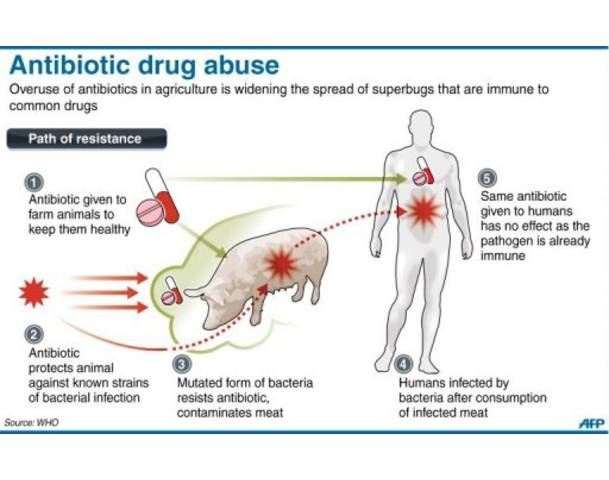
Content provided from Life
Extension Magazine (Death by Medicine) Report
Agger
contends that overuse of antibiotics results in food-borne infections that are
resistant to antibiotics. Salmonella is found in 20% of ground meat, but
the constant exposure of cattle to antibiotics has made 84% of salmonella
resistant to at least one anti-salmonella antibiotic.
Diseased animal food accounts for 80% of
salmonellosis in humans, or 1.4 million cases per year.
The conventional approach to countering this epidemic is to radiate food to try
to kill all organisms while continuing to use the antibiotics that created the
problem in the first place.
Approximately 20% of chickens are
contaminated with Campylobacter jejuni, an organism that causes 2.4 million
cases of illness annually. Fifty-four percent of these organisms are resistant
to at least one anti-Campylobacter antimicrobial
agent.
Denmark banned growth-promoting
antibiotics beginning in 1999, which cut their use by
more than half within a year, from 453,200 to 195,800 pounds. A report from
Scandinavia found that removing antibiotic growth promoters had no or
minimal effect on food production costs. Agger warns that the current crowded,
unsanitary methods of animal farming in the US support constant stress and
infection, and are geared toward high antibiotic use.
top
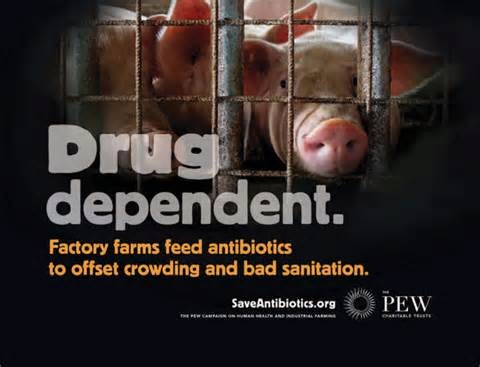
www.sustainabletable.org
© GRACE Communications Foundation
Modern industrial livestock operations are
an example of how rampant overuse of antibiotics threatens to increase the
prevalence of antibiotic-resistant bacteria. These industrial farms have been
mixing antibiotics into livestock feed since 1946, when various studies showed
that low levels of antibiotics (too low to actually fight disease) seemed to
help animals grow faster and put on weight more efficiently, thus increasing
profits for meat producers. iv When antibiotics are used like this -
for purposes other than treating an illness - it is called non-therapeutic
use.
Aside from promoting growth, the routine use
of antibiotics is also necessary for preventing disease in conventional
industrial farming systems. Modern industrial farms are ideal breeding grounds
for germs and disease. Animals live in close confinement, often standing or
laying in their own filth, and are under constant stress, which inhibits their
immune systems and makes them more prone to infection. Because of these
conditions, about half of the antibiotics used by farms are mixed into the feed
of healthy animals in order to prevent disease. v
The Union of Concerned Scientists (UCS)
estimates that the quantities of antimicrobials administered to livestock and
poultry far outweigh the amount of antibiotics used on humans. According to UCS
estimates, humans use approximately 4.5 million pounds of antibiotics annually
for medical treatment and in topical creams, soaps, and disinfectants. In
comparison, antibiotic use in beef, pork, and poultry production is estimated at
24.6 million pounds annually—approximately five and one half times
the amount used in human medicine. Thus, the use of antibiotics in livestock
agriculture accounts for 84% of total antimicrobial use in America. vi
Large livestock operations produce an
enormous amount of waste—over 1 billion tons annually—that often contains
intact and undigested antibiotics, as well as antibiotic-resistant fecal
coliforms (bacteria that live in the intestines). It is estimated that as much
as 80-90% of all antibiotics given to humans and animals are not fully digested
or broken down and eventually pass through the body and enter the environment
intact through waste. Thus, these antibiotics are released into the environment
where they may encounter new bacteria and create more resistant strains. vii
Many of the antibiotics used on livestock and poultry farms are identical or
similar to those used in human medicine, meaning that bacteria from farms can
infect people with diseases that can not be treated with common antibiotics. viii
Antibiotic
Resistance and Public Health - The rise of antibiotic-resistant bacteria is a major public health crisis
because infections from resistant bacteria are becoming increasingly difficult
and expensive to treat. Already, an estimated 14,000 Americans die every year
from drug-resistant infections, and the National Academy of Sciences calculates
that the increased health care costs associated with antibiotic-resistant
bacteria exceed at least $4 billion annually ix – a figure that
reflects the cost of additional antibiotics and longer hospital stays, but not
lost workdays or human suffering.
Sustainable
Alternatives - On industrial farms, animals are administered antibiotics on a
routine basis – through feed, water, or injection. But not all animals are
raised in such a manner. Ending or minimizing the use of antibiotics in
animal agriculture is both feasible and potentially beneficial to consumers.
According to a study by the National Academy of Sciences, if the U.S. were to
ban the non-therapeutic administration of antibiotics to livestock, the average
consumer's total food costs would only increase by $4.85 to $9.72 per year. The
study suggested that this ban would not affect the profits of farmers who
utilize good management practices. Furthermore, the ban would be expected to
decrease health care costs. xiv
Many small, sustainable producers do not use
antibiotics at all, in large part because they don’t have to compensate for
unhealthy conditions. On sustainable farms, animals are raised in a clean,
natural environment that is not a breeding ground for bacteria. Other
sustainable farmers will use antibiotics to treat animals only when they become
sick, and they will make sure the antibiotics have passed out of the animal’s
system before using its meat, eggs or milk.
What You Can Do
to Protect Yourself

Federally regulated
organic standards
prevent antibiotics being used in the production of certified organic meats. In
the Eat Well Guide,
farmers who never administer antibiotics to their animals carry the label “no
antibiotic use.” Some sustainable producers will use antibiotics to treat
animals that fall ill, and in this case, food from those animals cannot
be sold as “USDA certified organic” or with the label “no antibiotic use.”
Eat Well Guide
producers who only use antibiotics when an animal becomes ill carry the label
“no routine antibiotic use.” In these instances, a suitable amount of time
must pass after an animal is treated and before its meat, milk or eggs can enter
the food supply.
Some consumers prefer to buy meat from animals that
were never given antibiotics; other individuals are not concerned about
medically-necessary antibiotic use. The key is to avoid animals that were
fed low doses of antibiotics on a regular basis either to promote growth or
prevent disease. Not only does this greatly increase the occurrence of
antibiotic-resistant bacteria in our environment and food supply, it also
indicates that the animals were probably housed in crowded, unhealthy
conditions which make them prone to sickness.
-
Farmers’ markets are popping up all over the U.S.
and Canada as their popularity continues to grow. If you can’t make it to
the farm,
farmers’
markets are a great alternative. Usually the farmer or someone who works
on the farm is available and more than happy to answer your questions about
antibiotic use and how the animals were raised.
-
Buy local. When you buy locally produced fruits,
vegetables and meat products, you support your local economy.
Community
Supported Agriculture programs, Farmers’ markets and
Co-ops
are good options for doing this.
-
Advocate for
change. Individual consumers can help bring about broader
policy
change by urging the government and industry to reduce
unnecessary antibiotic use in animal agriculture.
top
www.bantransfats.com
© BanTransFats.com, Inc
Partial
hydrogenation is an industrial process used to make a perfectly good oil, such
as soybean oil, into a perfectly bad oil. The process is used to make an oil
more solid; provide longer shelf-life in baked products; provide longer fry-life
for cooking oils, and provide a certain kind of texture or "mouth feel."
The big problem is that partially hydrogenated oil is laden with lethal
trans fat.
There are four kinds of fats:
monounsaturated fat, polyunsaturated fat, saturated fat, and trans fat.
Monounsaturated fat and polyunsaturated fat are the "good" fats. It is
generally accepted that consumption of saturated fat should be kept low,
especially for adults. Trans fat (which means trans fatty acids) is the
worst kind of fat, far worse than saturated fat.
Top
nutritionists at Harvard
have
stated as follows:
"By
our most conservative estimate, replacement of partially hydrogenated fat in
the U.S. diet with natural unhydrogenated vegetable oils would prevent
approximately 30,000 premature coronary deaths per year, and epidemiologic
evidence suggests this number is closer to 100,000 premature deaths annually."
Content
provided from webmd.com/integrative-medicine-wellness
Dr.
Joseph Pizzorno writes about food and health, natural and integrative medicine,
environmental toxins and living a healthy lifestyle.
Trans fats – the chemically altered
fats found in partially hydrogenated oils – are just plain bad. Stick
margarine, shortening, and processed snack foods are the most common sources of
trans fats, but you’ll also find partially hydrogenated oils in an astounding
number of packaged foods, often labeled as “cholesterol free.” Read
ingredient labels! Trans fats, even as a small proportion of the diet, are bad
for you. They can raise your “bad cholesterol” (LDL), lower your
“good cholesterol” (HDL) and raise your total cholesterol. They also
appear to contribute to arterial disease and diabetes risk.
www.ama-assn.org - Copyright American Medical Association
Banning the use of
artificial trans fats is a life-saving move
that can help keep the public healthy, and the
American Medical Association strongly supports the Food and Drug
Administration’s recommendation to eliminate one of the most harmful fats in
our food supply .
The FDA’s recommendation aligns with AMA’s strategy to
prevent heart disease and type 2 diabetes and to
improve outcomes for those suffering from these diseases. With proper
intervention, the effects of these conditions can be dramatically reduced,
leading to a healthier nation and reducing health care spending.
Eating foods containing trans fat significantly
increases the risk for heart disease by raising levels of bad cholesterol,
while lowering levels of good cholesterol. Healthier fats and oils should be
substituted when trans fats are removed from foods. Healthier options, such
as extra virgin olive oil, could prevent 30,000 to 100,000 premature deaths
each year.
Retrieved from -
www.naturalnews.com
There is now a lot of interesting work going on regarding the health effects
of trans fats, and what is clear is that trans fats appear to be doing many
nasty things. Besides affecting the LDL and HDL, trans fats increase
triglycerides, and they increase the dysfunction of the endothelium in
arteries, that layer of cells lining blood vessels, which increases risk of
heart attack. Lp(a) is now recognized as an independent lipid risk factor
for coronary heart disease, and trans fats compared to saturated fats do
raise Lp(a). Again, that's also something we don't really understand. - The
Trans Fats Dilemma and Natural Palm Oil by
Gene A. Spiller
top
Foodborne
Illness
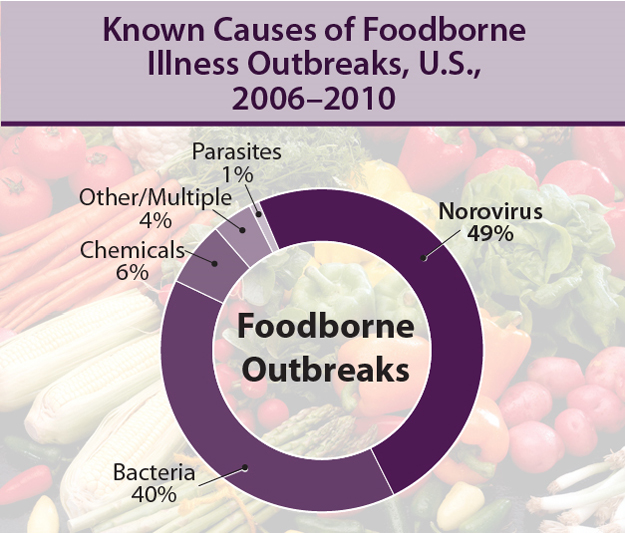
www.ama-assn.org - Copyright
American Medical Association
Foodborne illnesses are extremely common diseases. An
estimated 325,000 serious illnesses resulting in hospitalizations, 76
million cases of gastrointestinal illness, and 5,000 deaths each year have
been attributed to food-associated dangers. Substantial progress made in the
past in preventing certain foodborne illnesses such as typhoid and cholera
has led to decreased national attention on foodborne illness. This, coupled
with recent changes in human demographics and eating behavior, technology
and industry, international travel and commerce, microbial adaptation,
economic development and land use, and the lack of funding for updating
public health measures, has resulted in new and reemerging foodborne
illnesses.
How to
Protect Yourself from Foodborne Illness
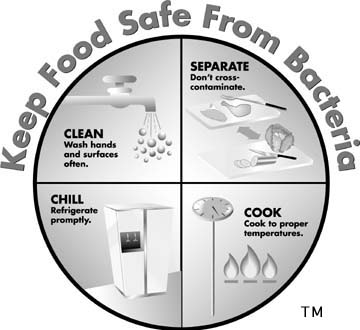
www.ama-assn.org - Copyright American Medical Association
Avoid food-borne illness - The US food supply is among the safest in the world, but organisms that you
can’t see, smell, or taste - bacteria, viruses and tiny parasites - are
everywhere in the environment. These microorganisms - called pathogens - can
invade food and cause illness, sometimes severe and even life-threatening
illness, especially in young children, older adults, and persons with
weakened immune systems. In pregnant women, food-borne illness can endanger
their unborn babies.
The most common symptoms of
food-borne illness are diarrhea, abdominal cramps, vomiting, head- or
muscle-aches, and fever. Symptoms usually appear 12 to 72 hours after eating
contaminated food but may occur between 30 minutes and 4 weeks later. Most
people recover within four to seven days without needing antibiotic
treatment.
Who is at risk
-
If
you are among those at high risk, you need to be aware of and follow the
most current information on food safety. Young children, pregnant women,
older adults, and persons with weakened immune systems are at a higher risk
for food-borne illness. Immune systems may be weakened by medical
treatments, such as steroids or chemotherapy, or by conditions, such as
AIDS, cancer, or diabetes. You are also at increased risk if you suffer from
liver disease or alcoholism or if you have decreased stomach acidity (due to
gastric surgery or the regular use of antacids).
If you face a higher
risk of food-borne illness, you are advised not to eat:
-
Raw fish or shellfish, including oysters, clams,
mussels, and scallops
-
Raw or unpasteurized milk or cheeses
-
Soft cheeses, such as feta, Brie, Camembert,
blue-veined, and Mexican-style cheese (Hard cheeses, processed cheeses,
cream cheese, cottage cheese, and yogurt need not be avoided)
-
Raw or undercooked eggs or foods containing raw or
lightly cooked eggs, including certain salad dressings, cookie and cake
batters, sauces, and beverages such as unpasteurized egg nog (Foods made
from commercially pasteurized eggs are safe to eat)
-
Raw or undercooked meat or poultry
-
Raw sprouts (Alfalfa, clover, and radish)
-
Unpasteurized fruit or vegetable juices (These
juices will carry a warning label)
Everyone should follow these four simple steps to
food safety:
-
Clean: Wash hands and surfaces often.
Bacteria, viruses, and parasites can be spread throughout the kitchen
and get onto cutting boards, utensils, and countertops. Here’s how
to Fight BAC!™:
-
Wash your hands with hot, soapy water before
and after handling food and after using the bathroom, changing diapers,
and handling pets.
-
Wash your cutting boards, dishes, utensils, and
countertops with hot, soapy water after preparing each food item and
before you go on to the next food.
Important: Rinse raw produce in water. Don’t
use soap or detergents. If necessary, use a small vegetable brush to
remove surface dirt.
-
Separate: Don’t
cross-contaminate.
Cross-contamination is the word for how
bacteria, viruses, and parasites can be spread from one food product to
another. This is especially true when handling raw meat, poultry,
seafood, and eggs, so keep these foods and their juices away from
ready-to-eat foods. Here’s how to Fight BAC!™:
-
Separate raw meat, poultry, and seafood from
other foods in your grocery shopping cart and in your refrigerator.
-
If possible, use a different cutting board for
raw meat, poultry and seafood products.
-
Always wash hands, cutting boards, dishes, and
utensils with hot, soapy water after they come in contact with raw meat,
poultry, seafood, and eggs.
-
Use separate plates for cooked food and raw
foods.
-
Cook: Cook to proper
temperatures .
- Food safety experts agree that foods are properly cooked when they
are heated for a long enough time and at a high enough temperature to
kill the harmful pathogens that cause food-borne illness. The best way
to Fight BAC!™ is to:
-
Use a clean thermometer that measures the
internal temperature of cooked food to make sure meat, poultry, and
casseroles are cooked to the temperatures in the chart at right.
-
Cook eggs until the yolk and white are firm. If
you use recipes in which eggs remain raw or only partially cooked, u se
pasteurized eggs.
Fish should be
opaque and flake easily with a fork.
When cooking in a microwave oven, make sure
there are no cold spots where pathogens can survive. For best results,
cover food, stir, and rotate for even cooking. If there is no turntable,
rotate the dish by hand once or twice during cooking.
Bring sauces, soups, and gravy to a boil when
reheating. Heat other leftovers thoroughly to at least 165°F.
-
Chill: Refrigerate
promptly.
Refrigerate foods quickly because cold
temperatures keep harmful pathogens from growing and multiplying. So,
set your refrigerator no higher than 40°F and the freezer at 0°F. Check
these temperatures occasionally with an appliance thermometer.
Then, Fight BAC!™ by following these steps:
-
Refrigerate or freeze perishables, prepared
foods, and leftovers within two hours or sooner.
-
Never defrost food at room temperature. Thaw
food in the refrigerator, under cold running water, or in the
microwave.
-
Marinate foods in the refrigerator.
Divide large amounts
of leftovers into shallow containers for quick cooling in the
refrigerator.
Don’t pack the refrigerator. Cool air must
circulate to keep food safe.
See Clean vs. Sanitize vs. Disinfect
See How to
Sanitize Your Food
top
Ten Worst
Foods to Avoid
www.cspinet.org
- Center for Science in the Public Interest
10 Worst and
Best Foods - Learn all about the worst foods to avoid, because What
Not to Eat: 10 Worst Foods has been conveniently compiled just for you.
And we don’t only tell you “Don’t eat these foods.” You’ll discover
exactly why each food makes the list – what makes each item so unhealthy.
top
|

|
